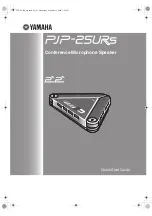
-3-
BASIC MODULATION THEORY
There are many different methods for modulating
information onto a radio wave.
The two most
popular methods are Amplitude Modulation (AM)
and Frequency Modulation (FM). Figure 1 shows
the basic difference between these two methods. In
an amplitude modulated radio wave, the audio
information (voice) varies the amplitude of the RF
carrier.
To recover this information, all that is
needed is a peak detector that follows the carrier
peaks.
This is fairly easy to understand.
In a
frequency modulated radio wave, the information
changes the frequency of the carrier as shown in
Figure 1.
The amplitude of the radio frequency carrier wave
remains constant.
The loudness of the audio
determines how far the frequency is moved from the
unmodulated carrier frequency.
In a normal FM
radio broadcast, the maximum deviation from center
frequency is set at +150kHz for the loudest sound.
A soft sound may move the carrier only +10kHz.
The number of times the carrier deviates from the
center frequency, each second depends on the
frequency of the audio. For example, if the carrier is
moved to +75kHz, then –75kHz 1,000 times each
second, the carrier is 50% modulated for loudness
with a 1,000 cycle audio tone.
One advantage of FM modulation over AM
modulation is the carrier amplitude is not important
since the information is carried by the frequency.
This means that any amplitude noise added to the
signal after transmission (such as lightning, spark or
ignition noise in cars, etc.) can be reduced by
allowing the amplifiers before detection to limit or
saturate. This principle is shown in Figure 2.
The standard broadcast band for FM was also
designed to have an audio range up to 25,000 Hertz
(Hertz = cycles per second).
The standard AM
broadcast band has only 7,000 Hertz band width
(Figure 3). The FM band is therefore considered to
be “High Fidelity” compared to the older AM band.
Another big advantage that FM has over AM is the
“Capture” effect in FM broadcast. If two different
broadcasts are very close in frequency or on the
same frequency in AM, they will produce an audio
tweet or beat. In FM, the receiver will “Capture” the
strongest signal and ignore the weaker one.
In
other words, if a local transmitter and another
distant transmitter are on the same frequency, the
FM receiver will lock in on the strong local station
and reject the weak one. In an AM radio, if the same
conditions exist, you will hear a beat (a whistle)
between the two stations, which is very annoying.
Capture works because the receiver “sees” radio
waves as the sum of each frequency present. Since
FM only looks at frequency, the weaker signal can
be eliminated by the limiter as shown in Figure 4.
The detector “sees” only the strong signal after the
limiting amplifier has stripped the weak one away.
Amplitude Modulation
Frequency Modulation
Figure 1
Figure 2
Original Transmitted
Signal
Received Signal with
Noise and Fading
Received Signal
After Limiting
Amplifier
Figure 3
Narrow Band
Wide
Bandwidth
7kHz
25kHz
AM Broadcast Band
FM Broadcast Band
Audio Bandwidth for AM & FM
Figure 4
Two Frequencies
Transmitted
What Limiter “sees”
Capture Effect
Output from limiter
F1 only . . . F2 removed
F1
F2
F1 + F2
Limiter Levels






























